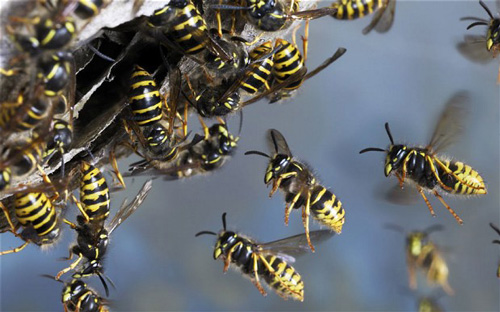October 20, 2021
by general admin
Introducing The New Branding For West Auckland Property Management
We unveiled our new branding to our clients this week at West Auckland Property Management, . We're excited...
Read more
Posted on August 30, 2021
Written by general admin
If you had to define what a pest is, you could easily pinpoint it with one word: wasp.
In New Zealand, German and common wasps are prominent pillagers of our urban, rural, and natural ecosystems. They can spoil people’s enjoyment of the outdoors as well as pose a health risk; some people are especially sensitive to wasp stings and may develop a severe allergic reaction called anaphylaxis.
Along with upsetting the ecological balance in several ecosystems, wasps also affect the profitability and safety of industries such as beekeeping, horticulture, forestry and tourism.
And unfortunately, New Zealand has the highest densities of these wasps in the world.
These wasps are very similar in appearance, and both have the characteristic black and yellow colouration. The German wasp was introduced in the 1940s and the common wasp arrived relatively recently but is now widespread.
German wasp nests are grey. Common wasp nests are brown. The world’s largest recorded wasp nest was discovered at Waimauku (near Auckland). According to Landsafe Research, the nest was 3.75 metres tall and 1.7 metres wide.
The venom from a wasp sting contains several toxins that can cause a hypersensitive or allergic reaction in some people, such as anaphylaxis – the most severe form of an allergic reaction, often affecting several parts of the body, including either breathing difficulties, a sudden drop in blood pressure, or even both.
If you ever comes across a wasp nest, do not attempt to destroy it on your own.
A tenant recently rang to notify us there were wasps flying around on their deck and they couldn’t keep the windows open or go onto the deck. Even worse, the wasps were entering the house somehow.
As such, our wasp expert, Denham Wall from Pest Control 2000, was called in to deal to this.
During the first inspection, Wall discovered that there were ventilation holes in the ceiling above the deck; the wasps were coming out of these holes in five different areas. In response, Wall sprayed a dust into the ceiling from the outside which is meant to pacify the wasps. To be more effective, the spray was carried out in the evening – a time when wasps are more docile.
A follow up visit the following week, however, revealed more wasps. Wall decided another dusting was in order. Unfortunately, the tenant called again to report there were even more wasps!
Concerned, Wall made another visit; he was adamant in stopping the wasps so he sprayed near another suspect area: near the chimney. Almost instantaneously, Wall was chased by 300 – 400 extremely angry wasps, prompting our expert to hightail it into the safety of his truck.
Worried for the tenant’s safety, Wall called us to contact the tenant, who luckily was away during the wasp war. Informed of Wall’s plan of attack, we suggested to the tenant to stay away for a little longer until the wasps calmed down. Wall was determined to take it care of it.
Upon a fourth visit, Wall finally felt he was on the top of the wasp problem, and approved the tenant’s return. But he plans on returning as he needs to cut back the ivy foliage where a further few nests were found.
Moral of the story: be accountable and take responsibility. Even if it takes several tries to get it right.
Are there wasps on your rental property? Do you need a reliable property management company to take care of issues like this?
Helen Warriner is a property management specialist at West Auckland Property Management. If you need a realistic, competent Auckland Property Management Company to look after your property give her a call on 09 832 0832.